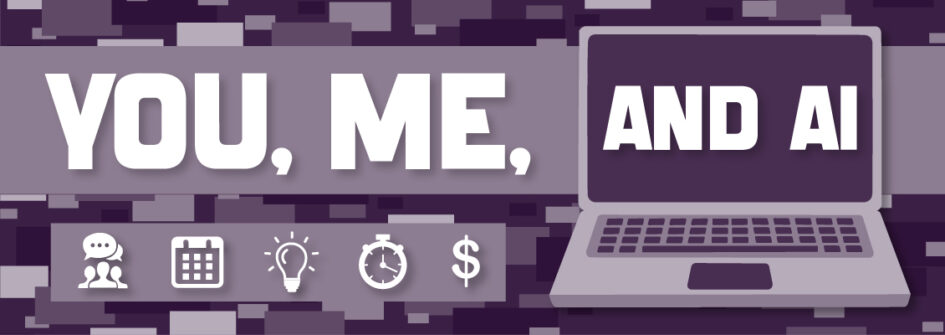By: Alix McCorkle & Laura Dobke
In today’s digital age, artificial intelligence (AI) has become a powerful tool for college students, offering a wide range of possibilities to enhance their studies, social media presence, and even leisure time. AI can assist with tasks such as generating creative content, improving academic performance, and building an online brand. In this blog, we’ll explore how students can use AI to streamline their workflows, boost creativity, and engage with new tech-driven experiences, all while making the most of their time in college.
10 AI Resources for College Students
- ChatGPT– For writing assistance and idea generation.
- Grammarly– For grammar and writing improvement.
- Quillbot– For paraphrasing and summarizing text.
- Google Gemini – For research and information gathering.
- ChatPDF– For interacting with and extracting information from PDFs.
- Doctrina – For accessing notes and quizzes.
- Tutor AI– For personalized learning and tutoring.
- Kickresume – For creating professional resumes.
- Microsoft Copilot Designer – For generating AI art.
- Canva– Generating Promotional Graphics, QR Codes, and Photos
Generative AI
Generative AI (GenAI) refers to the use of artificial intelligence to create content, such as text, images, or videos, through algorithms and machine learning. For students, this can be a game-changer when it comes to productivity and creativity. Rather than starting from scratch, AI tools can assist in generating ideas, drafting outlines, or even creating entire pieces of content based on minimal input. For example, platforms like ChatGPT can help students brainstorm, refine their writing, or suggest improvements, while tools like DALL·E and Runway can generate images and videos that complement their work. By using AI for content creation, students can focus more on refining their ideas and adding personal insight, rather than spending time on the initial stages of creation. It’s a way to amplify their creativity and work smarter, not harder.
AI in the Classroom
Students are expected to uphold academic honesty and integrity in all their academic endeavors. To ethically use AI in the classroom for learning or studying purposes, students should only use AI tools as supplementary resources rather than substitutes for their own work. For instance, AI can be used to generate study guides, provide explanations for topics, or offer practice problems. However, students must always cite any AI-generated content they incorporate into their assignments and avoid using AI to complete exams or assignments dishonestly. By using AI responsibly, students can enhance their learning experience while maintaining the integrity of their academic work.
University of Wisconsin-Whitewater Academic Misconduct Policy: https://www.uww.edu/policies/disciplinary-procedures-x277049
Using AI for Social Media
For students building their personal or professional brand, AI can be a powerful ally in social media management. AI tools can help them curate content, brainstorm captions, create engaging posts, and analyze audience interaction to improve their online presence. For example, AI-powered applications can suggest trending hashtags, optimal posting times, or even design aesthetically pleasing posts. Students can also use AI to automate responses, monitor brand mentions, and track the effectiveness of their campaigns, saving time and improving engagement. Additionally, AI tools can help with video editing or content optimization, making it easier for students to create high-quality, shareable content. By using AI to streamline their social media strategies, students can focus more on engaging authentically with their audience while maintaining a consistent, professional image online.
AI for Fun
College students can use various AI resources for fun and entertainment. Such as Snapchat, which offers an AI user to chat with, along with AI-enhanced lenses and filters making snaps more engaging. Additionally, students can explore AI chatbots on platforms like Discord or WhatsApp, which provide conversational companionship and interactive experiences. Music apps such as Spotify also use AI learning to curate personalized playlists that match students’ tastes and moods, to enhance and personalize their listening experience. For a creative outlet, AI art generators like DALL-E can be used to create unique and imaginative digital artworks. These AI tools and resources not only add a layer of enjoyment to everyday activities but also showcase the fascinating possibilities of artificial intelligence in our lives.
In conclusion, AI offers college students valuable tools to enhance their academics, creativity, and social media presence. Whether it’s generating content, supporting learning, or providing entertainment, AI can help students work smarter, stay organized, and explore new possibilities. By using AI responsibly, students can maximize its potential to succeed in both their studies and personal projects.

Leave a Reply